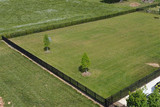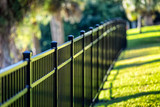Powder Coating vs. Painting Aluminum: Which Is the Better Finish?
When it comes to finishing aluminum surfaces, two popular methods stand out: powder coating and painting. Both techniques have their unique advantages and drawbacks, making the choice between them dependent on specific needs and applications. In this blog post, we'll explore the key differences between powder coating and painting aluminum, examining their processes, durability, cost, environmental impact, and aesthetic outcomes.
The Basics of Powder Coating and Painting
Powder Coating:
Powder coating is a dry finishing process that involves applying a powder, typically composed of fine resin and pigment particles, to a metal surface. This powder is electrostatically charged and sprayed onto the aluminum. Once coated, the aluminum piece is heated in a curing oven, causing the powder to melt and form a smooth, uniform, and durable finish.
Painting:
Painting aluminum involves applying liquid paint to the surface using methods such as spraying, brushing, or rolling. The paint can be solvent-based or water-based, and it typically requires multiple coats, including a primer, color coat, and sometimes a clear coat for added protection. The painted surface then needs to air-dry or be baked to cure the finish.
Durability and Longevity
Powder Coating:
- Durability: Powder coating is renowned for its toughness. The curing process creates a hard, resilient finish that is resistant to chipping, scratching, and fading. This makes it ideal for items exposed to harsh environments or heavy use.
- Longevity: The longevity of powder-coated aluminum is exceptional. It can withstand UV radiation, extreme weather conditions, and corrosive elements, maintaining its appearance and protective qualities for many years.
Painting:
- Durability: While modern paints have significantly improved in durability, they are generally less resilient than powder coatings. Painted surfaces can chip, scratch, and fade over time, particularly if exposed to harsh conditions.
- Longevity: Painted finishes may require more frequent maintenance and touch-ups compared to powder coatings. UV exposure can cause colors to fade, and the paint may degrade faster under extreme weather conditions.
Cost Considerations
Powder Coating:
- Initial Cost: The initial cost of powder coating can be higher due to the specialized equipment and curing ovens required.
- Long-Term Cost: Given its durability and low maintenance needs, powder coating can be more cost-effective in the long run, reducing the need for frequent repairs and repaints.
Painting:
- Initial Cost: Painting generally has a lower initial cost as it doesn't require specialized equipment.
- Long-Term Cost: Over time, the costs can add up due to the need for regular maintenance, touch-ups, and potential repaints to keep the aluminum looking its best.
Environmental Impact
Powder Coating:
- Eco-Friendliness: Powder coating is considered more environmentally friendly. It produces minimal volatile organic compounds (VOCs) and overspray can be collected and reused, reducing waste.
- Energy Consumption: While the curing process consumes energy, advancements in technology are making this process more efficient.
Painting:
- Eco-Friendliness: Traditional solvent-based paints release significant VOCs, contributing to air pollution. However, water-based paints are becoming more popular as they emit fewer VOCs.
- Waste Management: Paint overspray, spills, and the disposal of used brushes and rollers can contribute to environmental waste.
Aesthetic Flexibility
Powder Coating:
- Finish Variety: Powder coating offers a wide range of colors and finishes, including matte, glossy, textured, and metallic. It provides a consistent and uniform appearance.
- Customization: Custom colors and special effects are achievable, but may be limited compared to painting.
Painting:
- Finish Variety: Painting provides an extensive array of colors and finishes. Customization options are nearly limitless, allowing for precise color matching and unique visual effects.
- Artistic Flexibility: Painting is more versatile for detailed and artistic finishes, making it suitable for projects requiring intricate designs.
Conclusion
Choosing between powder coating and painting aluminum depends on your specific needs and priorities. If durability, low maintenance, and environmental impact are your primary concerns, powder coating is likely the better choice. However, if you prioritize initial cost, customization, and artistic flexibility, painting might be more suitable.
Ultimately, both finishing techniques have their place in the world of aluminum treatment. By understanding their differences, you can make an informed decision that aligns with your project's requirements and long-term goals.
Recent Posts
-
Experience, Reputation, Customer Service
Here’s why buying from OnlineFenceStore.com is a strong choice for fencing products: Key Advantages …Aug 13th 2025 -
How to Order Fence from OnlineFenceStore.com: A Step-by-Step Guide
How to Order Fence from OnlineFenceStore.com: A Step-by-Step Guide Ordering a fence online has never …Jul 30th 2025 -
Plumb vs. Level: Understanding the Difference in Fence Post Installation
When it comes to installing a fence, getting the job done right the first time is crucial. One of th …Jun 19th 2025







